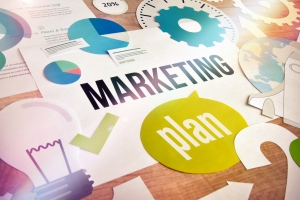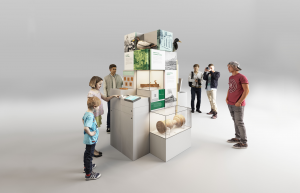We've all had that moment, stuck at a red light or cruising through traffic, when a car wrapped in bright graphics or a van with bold lettering catches our eye. Maybe it was a witty slogan, a vibrant color, or a local business name that stood out against the sea of neutral cars. Whatever it was, you noticed it. And in a world oversaturated with static ads and digital noise, that flash of real-world visibility holds power.
That's why so many small business owners, freelancers, and mission-driven entrepreneurs are turning to magnetic vehicle signs for sale as a flexible, affordable solution. Unlike full car wraps or stationary signage, magnetic signs let you brand your vehicle on your terms, removable, reusable, and ready to turn everyday driving into a visibility machine.
But why do mobile signs catch our attention more than billboards or bus benches? The answer lies deep in human psychology, attention science, and how our brains are wired to notice movement.
The science of attention: why motion wins
Our brains evolved in environments where survival depended on noticing what moved. A rustle in the bushes, a flash of color darting across our vision, these cues could signal food or danger. Though we now live in cities, not savannas, our neural wiring still prioritizes motion.
This is backed by research in cognitive psychology and advertising science. A study published in the Journal of Experimental Psychology: Human Perception and Performance found that moving stimuli are detected faster and remembered better than static ones. Mobile visuals are more likely to interrupt our "attentional blindness", the tendency to overlook things we're not actively searching for.
So while a roadside billboard may become visual wallpaper after a few commutes, a passing vehicle with an eye-catching design demands attention.
Novelty and disruption in our visual field
Movement isn't the only factor. There's also the novelty effect. We're hardwired to notice what breaks patterns. In a parking lot full of sedans and SUVs, a van displaying an inspiring message or vibrant branding becomes the visual disruptor.
Unlike traditional signs that stay put, vehicle signs show up in unexpected places, school drop-off lines, grocery store lots, residential streets. The message arrives where people least expect it. That surprise gives it sticking power.
Psychologists refer to this as the Von Restorff effect, which states that distinctive items are more likely to be remembered. A custom magnetic car sign that contrasts its surroundings will naturally attract more glances and generate more cognitive engagement.
Trust, familiarity, and local impact
People also trust what they see in their neighborhoods more than what they see on a website banner. When a local landscaper drives by with their business info on the door, it signals reliability. When a nonprofit's van promotes an upcoming event, it shows community involvement.
This taps into a deeper cognitive bias called the mere exposure effect: the more we see something, the more we tend to trust it. But there's a twist, familiarity grows faster when exposure happens in diverse settings. So a mobile vehicle sign seen across town, in various neighborhoods, builds recognition and trust more efficiently than one stationary billboard.
Beyond branding: vehicle signs as conversation starters
In many cases, a vehicle sign does more than promote, it invites interaction. People snap photos, ask about services in parking lots, or follow a QR code while waiting at a light. This passive-to-active transition is what marketing experts call “engagement.” And it's incredibly valuable.
That's part of why companies and individuals are investing in high-visibility, human-centered advertising methods. According to a report by the U.S. Small Business Administration, local visibility remains a core growth strategy for microbusinesses, especially when combined with approachable, mobile-friendly design elements.
Magnetic vehicle signs hit the sweet spot: they're approachable without being pushy, visible without being intrusive.
The freedom of mobility: flexibility with purpose
Another psychological benefit of mobile signs is their association with freedom and motion. Cars symbolize independence, progress, and modern life. When your message moves with you, it aligns with those same values.
It also gives creators control. Unlike a billboard contract or leased ad space, a magnetic vehicle sign can be applied today, removed tomorrow, and repositioned at will. That sense of autonomy appeals to solopreneurs, artists, delivery drivers, real estate agents, and others who wear multiple hats.
For example, a yoga teacher can brand her car while commuting to classes but remove the signage when driving on vacation. A side-hustle baker can advertise on weekends without committing to a full wrap. The magnetic nature supports this ebb and flow.
Designing for mobile attention

To make the most of mobile visibility, good design matters. Here are a few science-backed tips:
- Bold contrast: High contrast between text and background improves legibility. Black on yellow, white on blue, etc.
- Clear fonts: Sans-serif fonts are easier to read quickly. Stick to one or two fonts max.
- Essential info only: Business name, service, contact method. People don’t have time to read a paragraph at 30 MPH.
- Simplicity: Leave space. Don’t overcrowd the sign.
- Motion lines or arrows: These subtly imply movement and draw the eye.
The best signs are like good billboards, but closer to eye level and more relatable.
The dual benefit: personal and promotional
Vehicle signs don’t just help with visibility. They also boost a sense of ownership and pride. When entrepreneurs see their name on the side of a vehicle, it often reinforces identity. This isn’t just marketing, it’s a mobile affirmation of purpose.
It also encourages professionalism. Clients take you more seriously when your vehicle reflects your service. For tradespeople, mobile therapists, mobile pet groomers, even authors on book tours, it adds legitimacy.
When you become your own platform
There’s a growing movement toward micro-advertising, individuals becoming their own media platforms. Whether you’re promoting a podcast, eco-friendly service, or community cause, a magnetic vehicle sign helps you control your narrative.
Unlike social media posts that disappear in a scroll, or digital ads that vanish when the budget runs out, a car sign keeps showing up. It’s content in motion. And it keeps your message grounded in real life.
In an age where digital platforms shift constantly, mobile signage becomes an offline anchor.
The psychology of repetition and route mapping
People often drive the same routes: work, school, gym, favorite coffee shop. When your vehicle follows those routes daily, your message becomes a trusted part of the scenery. Over time, people recognize your brand before they even realize it.
That repetition is powerful. In behavioral psychology, repeated exposure in predictable patterns leads to faster memory recall. So the 7th or 8th time someone sees your car near their child’s school, they’ll remember the service when they need it.
Why it works for values-driven businesses
People are increasingly seeking brands with values. If you’re a wellness coach, sustainable brand, community advocate, or mental health service, you need visibility, but it needs to feel genuine.
Magnetic vehicle signs strike that balance. They signal that you’re part of the community. That you’re not shouting for attention, but you’re here. Accessible. Human.
That subtle psychology can make all the difference when someone chooses between a faceless corporation and a name they recognize from the neighborhood road.
We live in a world overloaded with digital content. Pop-ups. Notifications. Targeted ads. Yet amidst all that noise, a real-life message on a real-life car still turns heads, and starts conversations.
The psychology is simple but powerful: we notice what moves, what’s different, and what feels close to home. Magnetic vehicle signs don’t just advertise. They leverage those instincts. And they remind us that visibility isn’t about being loud, it’s about being seen, again and again, by the people who matter most.






